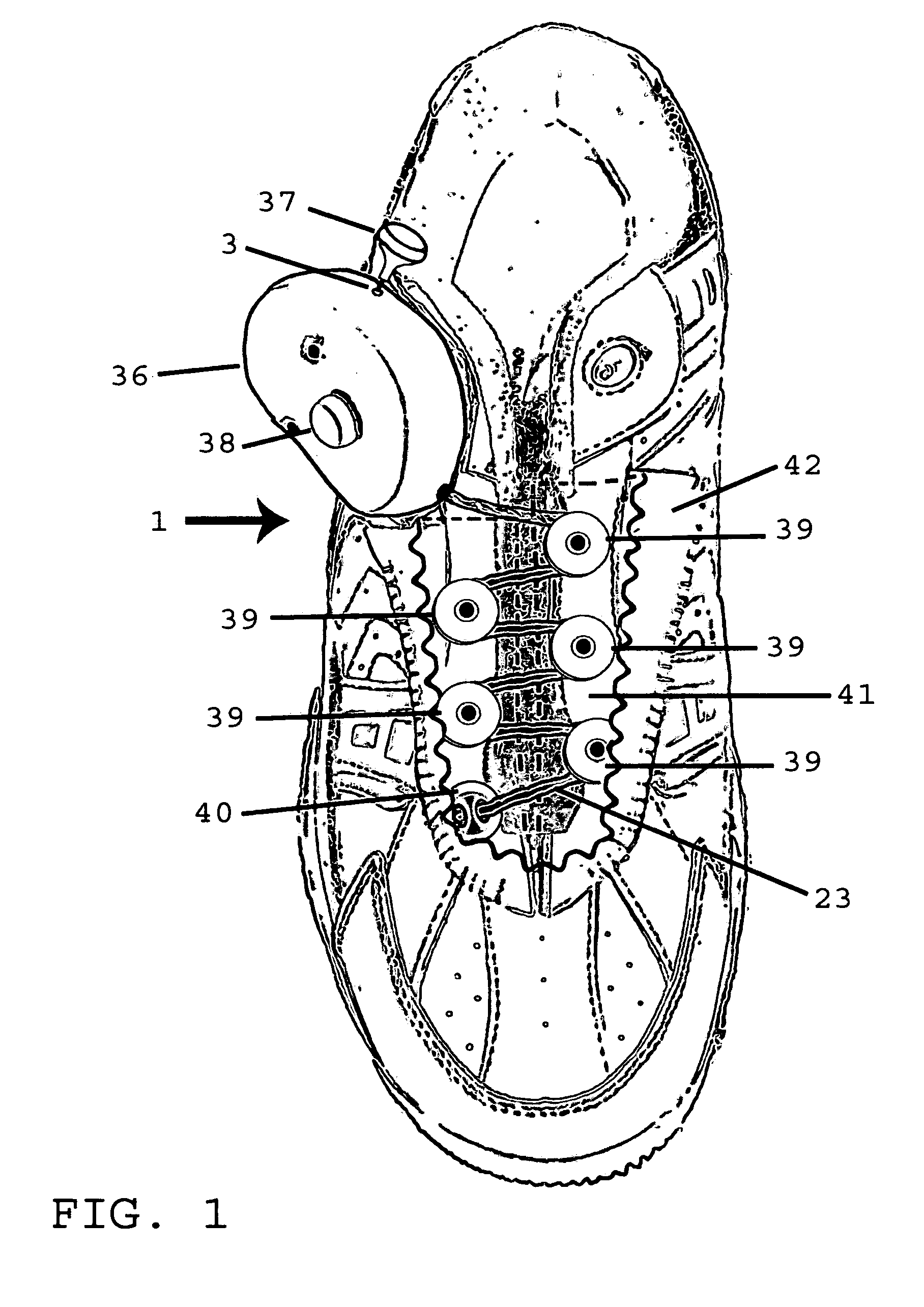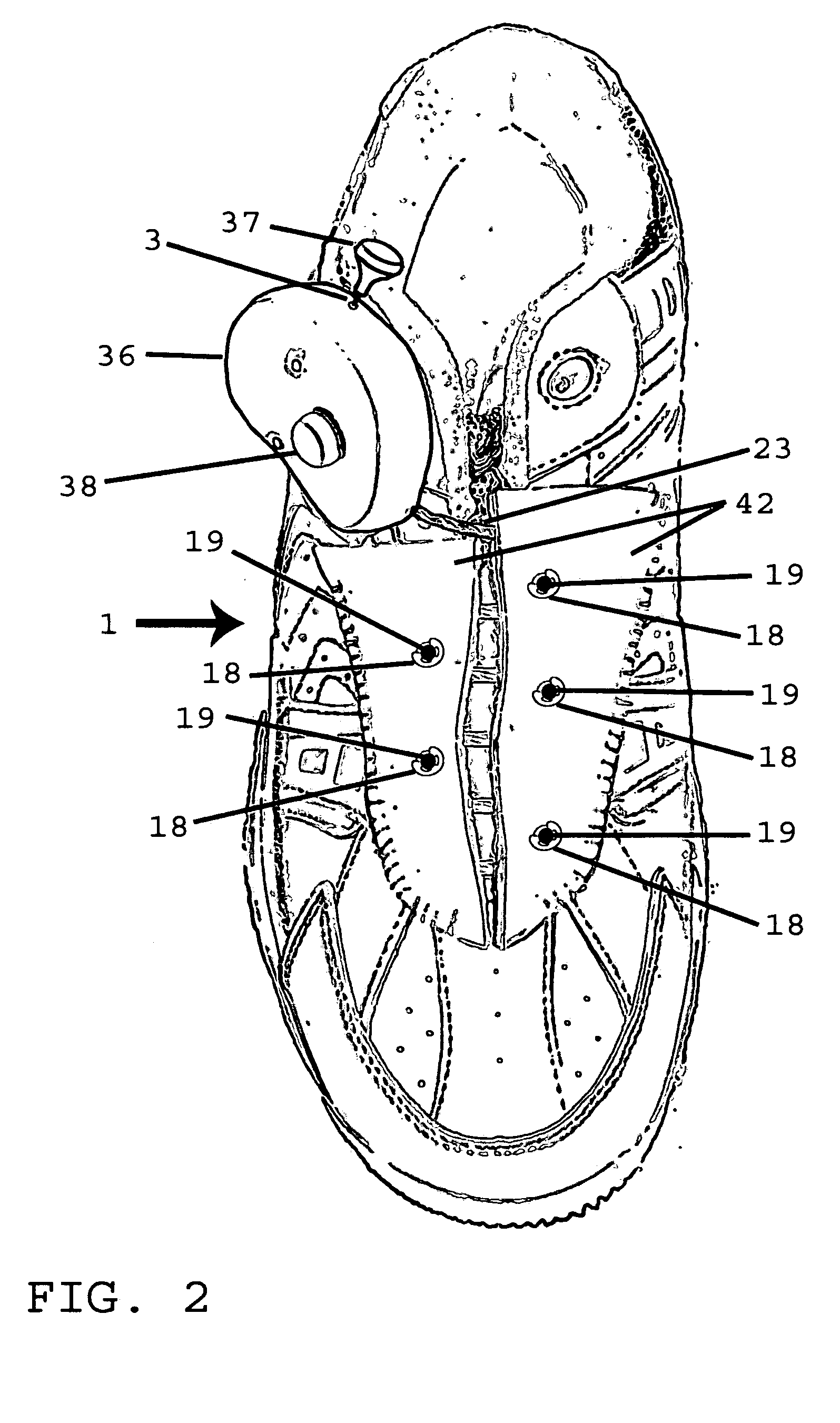Pull-cord and pulley lacing system
- Summary
- Abstract
- Description
- Claims
- Application Information
AI Technical Summary
Benefits of technology
Problems solved by technology
Method used
Image
Examples
Embodiment Construction
[0046] Referring to FIG. 1, there is disclosed one embodiment of a pull-cord actuated pulley lacing system as used on footwear to tighten it to the user's foot (from herein, it should be understood that the shoe helps illustrate the application of the invention for the purpose of this patent application, and the shoe represents any item to which the invention could be applied). When the pull-cord 3 is pulled, the drawing mechanism 36 pulls the lace 23, shortening the lace length between the drawing mechanism and the attachment point 40, in turn causing the pulleys 39 to draw closer to each other (the lace is threaded around the outer sides of the circumference of the pulleys). In the current embodiment the pulleys 39 are attached to the upper of the shoe by way of axle pins 19, the ends of which are attached to the main upper 41 (below the pulleys) and secondary upper 42 of the shoe (clips 18 hold the pulley on the shoe), allowing the pulleys 39 to turn on a plane generally parallel...
PUM
 Login to View More
Login to View More Abstract
Description
Claims
Application Information
 Login to View More
Login to View More - R&D
- Intellectual Property
- Life Sciences
- Materials
- Tech Scout
- Unparalleled Data Quality
- Higher Quality Content
- 60% Fewer Hallucinations
Browse by: Latest US Patents, China's latest patents, Technical Efficacy Thesaurus, Application Domain, Technology Topic, Popular Technical Reports.
© 2025 PatSnap. All rights reserved.Legal|Privacy policy|Modern Slavery Act Transparency Statement|Sitemap|About US| Contact US: help@patsnap.com



